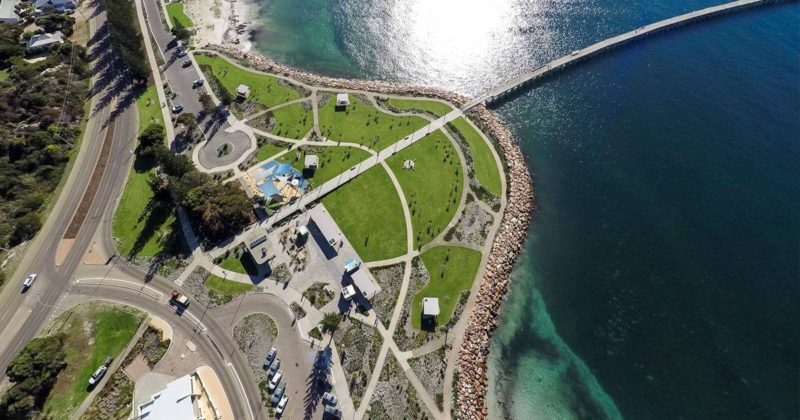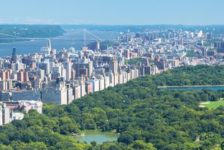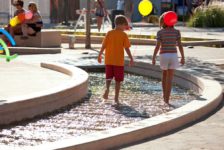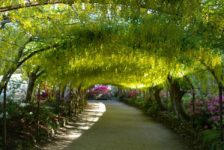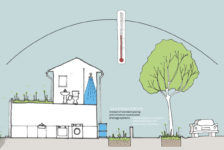By Niriti Porwal – A Review of Esperance Waterfront, by HASSELL, in Esperance, Australia. The town of Esperance — located 720 kilometers southeast of Perth in Western Australia — is experiencing a rapid urbanization, with the state’s population expected to more than double by 2050. Esperance Waterfront, a 1.1-kilometer-long site, was recently developed along the coast to meet the new infrastructural needs of the town. This project is an addition to the worldwide portfolio of landscape architecture that connects the landscape with the context for a sustainable urban environment. Designated as a “Super Town” by the government, Esperance is earmarked for strategic development to support the growth of its town. HASSELL was chosen as the principal consultant for this waterfront renewal project. The prime expectation was a development that would keep the essence of the city alive while accommodating the future development the town is expected to experience.
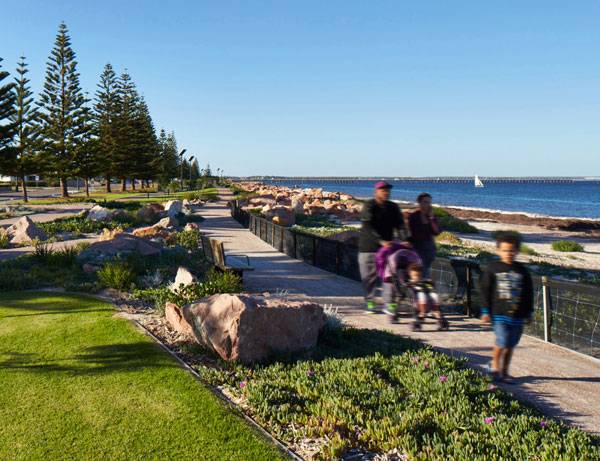
Esperance Waterfront. Photo credi: Peter Bennetts
The Design – Esperance Waterfront
Wedding the Past to the Future
The design for the project draws its concept from the history of Esperance. To implement it properly, HASSELL’S design team worked with the Shire to understand the relationship of the people with the waterfront and how they see the development in the future. The constructive conversations resulted in a few major interventions, including a reclaimed headland, a continuous revetment along the promenade, pavilions, and play space for family gatherings.
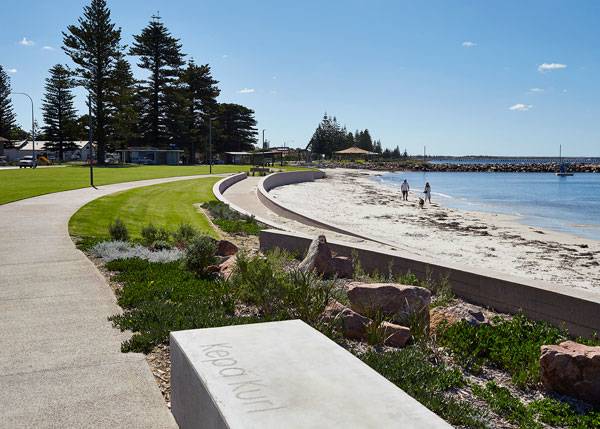
Esperance Waterfront. Photo credi: Peter Bennetts
Designs that Serve All
Programmatically rich, the design includes a plethora of activities that take into account people of all age groups and interests. Reorienting the park as a family destination was an important consideration, which has made the project lively. The entrance to the site is marked by a whale tail sculpture located at the beachside plaza at James Street. The intervention allows improved access to the waterfront and connects the site with the historic town. Following the plaza, the reclaimed land around the historic tanker jetty was planned to provide a vast area of 11,000 square meters for public events and sports.
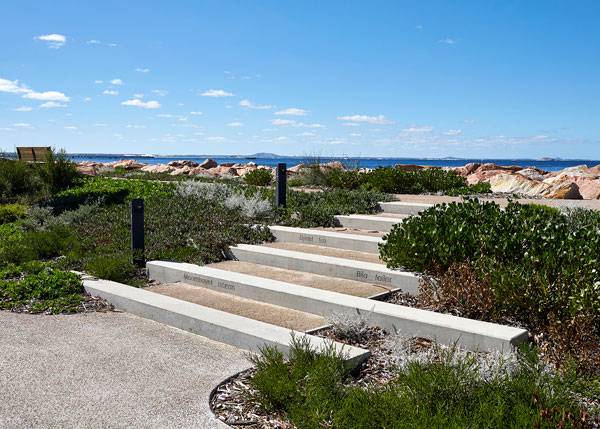
Esperance Waterfront. Photo credi: Peter Bennetts
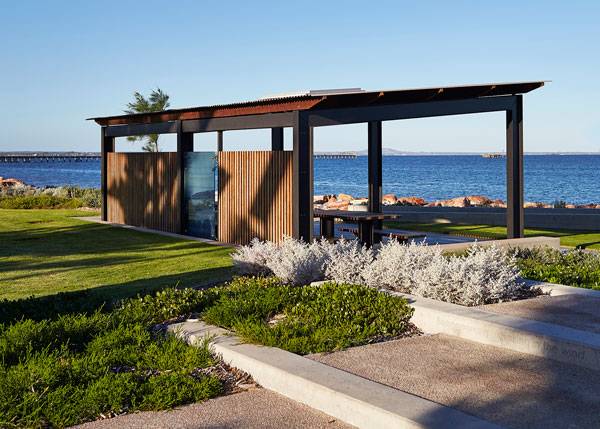
Esperance Waterfront. Photo credi: Peter Bennetts
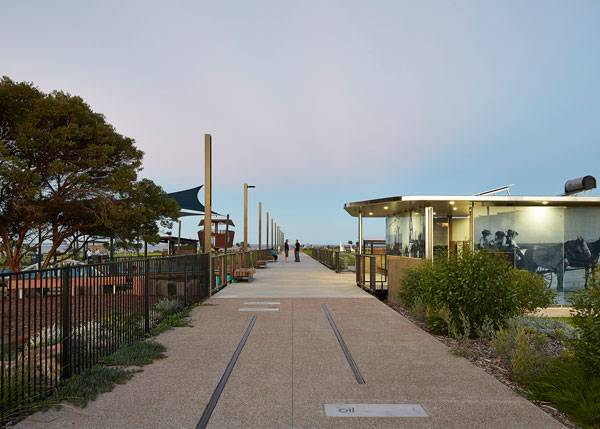
Esperance Waterfront. Photo credi: Peter Bennetts
Creating a Sense of Belonging
What makes the project unique is the connection between the site and people. To create a sense of place, design decisions were made by involving historians, local artists, and graphic designers. When one walks through the site, it narrates stories about the indigenous, natural, and early settler history of the town. The experience is enhanced by nodal points along the pathways, integrated with artistic signage. Public art combined with distinctive flora and fauna at important places highlight significant elements such as Sammy, the adored resident seal.
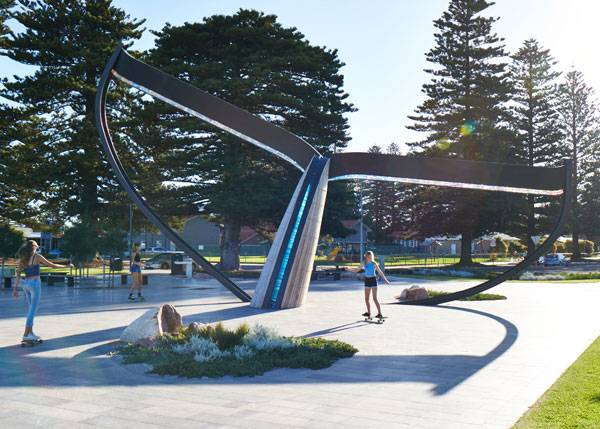
Esperance Waterfront. Photo credi: Peter Bennetts
Foundation for the Future
The choice of plants for a landscape project is a crucial decision that brings inclusiveness in varied design elements. However, the specification and management of plantings, particularly ground cover and tree stock, becomes challenging in a coastline environment, explains Anthony Brookfield, principal at HASSELL.
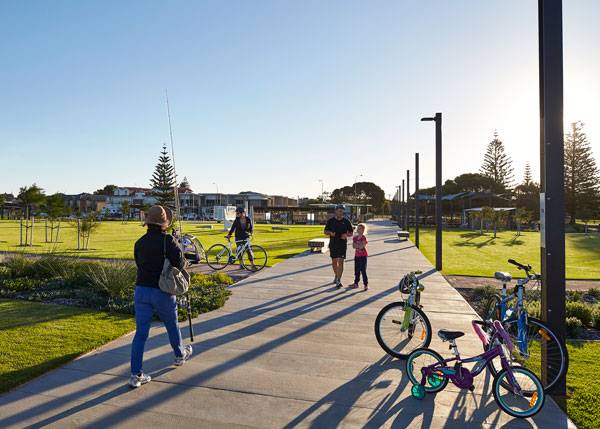
Esperance Waterfront. Photo credi: Peter Bennetts
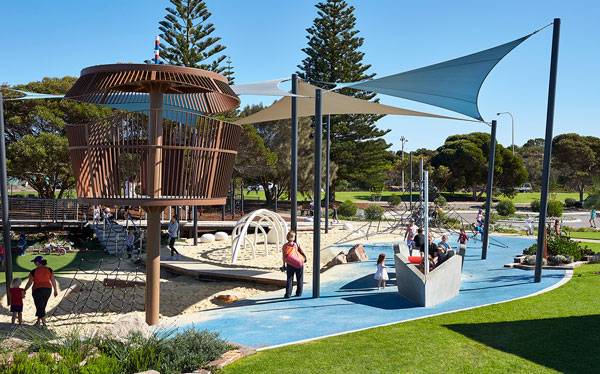
Esperance Waterfront. Photo credi: Peter Bennetts
A New Lifeline
Esperance Waterfront has become one of the most conscious design solutions speaking to context, accommodating the future needs of a growing population, and at the same time being ecologically sensitive. According to the Shire of Esperance’s 2015 waterfront community and tourist satisfaction survey, more than 85 percent of locals said the waterfront redevelopment met their expectations. Ninety percent of locals use the foreshore every week. Esperance Waterfront is truly a cultural and environmental restoration for a central foreshore community. What do you think? How can landscape projects remain true to their context and yet fulfill the needs for future development?

Esperance Waterfront. Photo credi: Peter Bennetts
Full Project Credits For Esperance Waterfront :
Project Name: Esperance Waterfront Location: Esperance, Australia Client: Shire of Esperance Landscape Architect: HASSELL Scale: 8 hectares Year: 2015 Status: Completed Project Consultants: JDSi Consulting (Civil Engineer), 3E Consulting Engineers (Lighting Design), Harriot Mair Landscape Architect (Local Landscape Architect), CADSult (Irrigation), Beverley Iles (Artsource), Paperbark Technologies (Arborist), Cartman Designs/HASSELL (Architect), Scott Smalley Partnership (Structural Engineer), Griffiths Architects (Heritage Consultant), Sime Building and Construction (Construction) Photography: Peter Bennetts Site Plan: HASSELL Awards: 2016 Australian Urban Design Awards – Commendation for Delivered Outcome – Large Scale 2016 Australian Institute of Landscape Architects (Western Australia) Awards – People’s Choice Award 2016 Australian Institute of Architects (Western Australia) Awards – State Commendation for Urban Design Recommended Reading:
- Becoming an Urban Planner: A Guide to Careers in Planning and Urban Design by Michael Baye
- Sustainable Urbanism: Urban Design With Nature by Douglas Farrs
- eBooks by Landscape Architects Network



